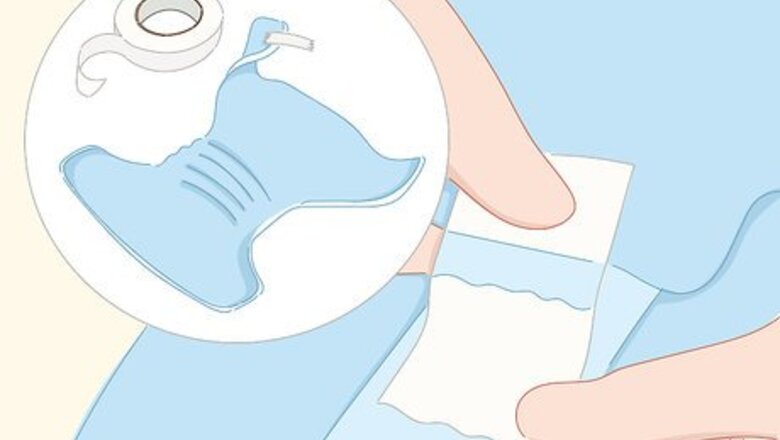
views
Using Barriers with Your Child's Diaper
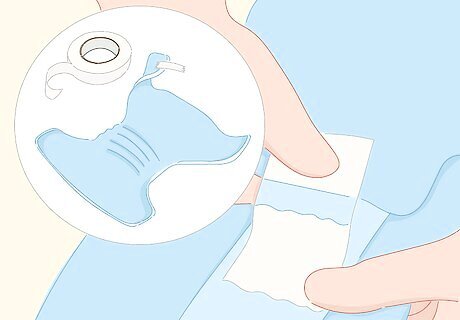
Use duct tape on the diaper to make it harder to remove. Diaper tabs are made to pull off easily, so even your child is able to take off their own diaper. Add a little duct tape, and the task becomes a bit harder, as duct tape is stronger than a diaper tab. Just be sure not to get the tape on your child's skin, as that could be very painful. Cover the diaper tabs completely with the tape.
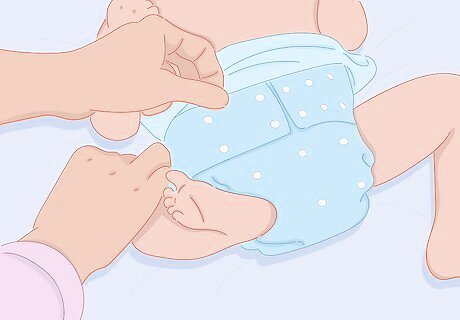
Try harder-to-remove cloth diapers. Cloth diapers don't rely on tabs like disposable diapers do. Instead, they have snaps and clips. Many also have a separate cover. If your child has figured out tabs, they may have more trouble with the snaps and tabs of cloth diapers. While cloth diapers can seem expensive at first, they are generally cheaper in the long run because you don't need to keep buying them. If you’re not ready to switch to cloth diapers, try using a cloth diaper cover over a disposable diaper.
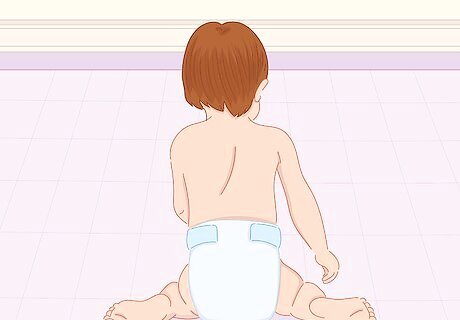
Turn your child's diaper around. The diaper tabs are in the front, making it easy for your child to grab them and pull the diaper off. However, if you turn the diaper around so the tabs are in the back, your child will have a harder time pulling them.
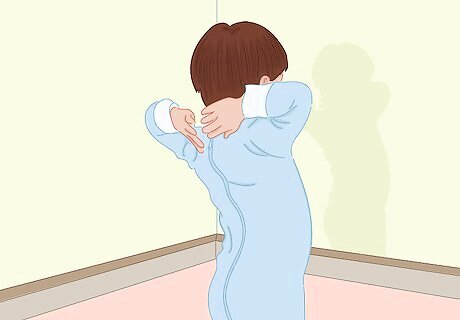
Make your child's clothes more difficult to take off. You can do this by turning their clothes around so that buttons and zippers are in the back. You can also buy 1-piece pajamas with zippers in the back for nighttime. If you want to turn around pajamas that have feet, try cutting the feet off. If your child can't get to their diaper, they can't take it off.

Use clothes like overalls that are naturally hard to remove. One easy way to keep a toddler from removing their diaper is to dress them in a way that makes the diaper harder to reach. Overalls are great for this because the buckles make them hard to remove. Make sure that the straps over the shoulders are not so tight that they restrict movement, but are snug enough to make them difficult to get them off.
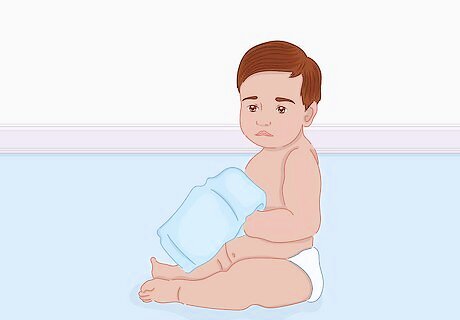
Distract your child with an extra diaper. Your child might simply like taking off the diaper as a way of exploring, particularly at night. It's something fun to do! In that case, adding another diaper may help deter this behavior. Simply place the extra diaper on top of your child's clothes before you tuck them into bed. You can also try putting a fresh diaper on your child’s favorite doll or stuffed toy. That way, your child can explore and try getting the diaper off the toy and putting it back on instead of fiddling with their own diaper.
Working on the Behavior
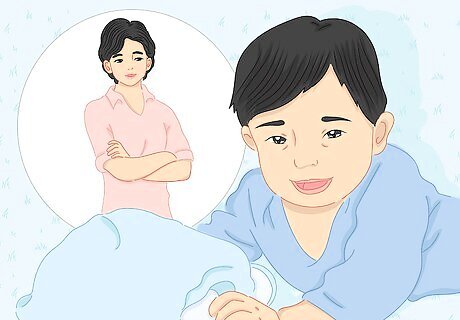
Avoid giving your child a reaction. If you scold your child or act embarrassed when they take their diaper off, they're more likely to do it again in the future. They think it's hilarious to get a reaction from you! Try to curb your reaction, and act in a calm manner. For example, if they take their clothes off in public, don't get angry. Just calmly take them to the restroom and have them put their clothes back on. Explain to them that they should only do that in the privacy of their own home.

Give your child a phrase to tell you when they need to be changed. Some kids just don't know how to tell you they're wet. By teaching them what to say, you can help them when they are soiled so they don't simply strip. If you find your child trying to take off their clothes because they're wet, tell them, "Say 'wet'!" Try to do this every time your child is stripping off their clothes. When they say it, change them. You can also use a phrase like "Go potty" or "Change diaper."
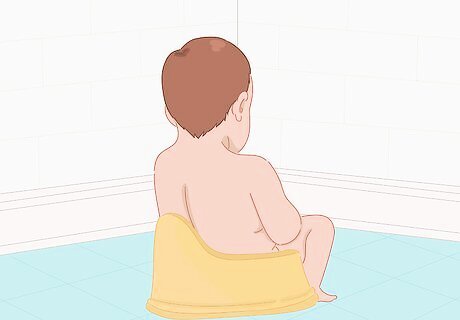
Pay attention to the signs your child is ready to potty train. Sometimes, taking a diaper off could mean your child is close to being ready to use the bathroom. Watch to see if they stay dry for a couple of hours. They also won't want to stay in dirty diapers, which is why they may take them off at times. They'll also show they are starting to understand when they need to go to the bathroom, such as scowling a bit or crouching in a corner. They'll start to seem more interested in the potty.
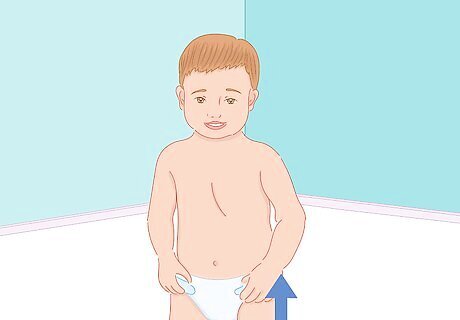
Show your toddler how to put their diaper back on. Some kids like the independence of being able to take off their clothes. If your kid seems proud of themselves when they take their clothes and diaper off, try showing them how to put them back on themselves. That way, they learn a new skill they can be proud of, and you will end up with a diapered, clothed child. You can even show them where to get new diapers, but only keep a few out so your toddler doesn't go through a whole stash.
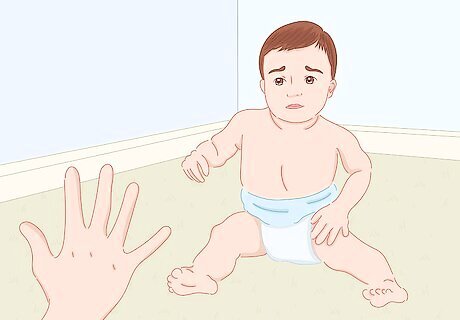
Teach boundaries for touching behaviors. Some children remove their diapers because they are exploring their bodies. In kids this age, it's mostly just curiosity, but they will play with their private parts. You can start explaining to them that's something they should do in private. You can say, "It's okay to touch yourself down there, but you should only do it when you're alone in your room."
Minimizing Discomfort
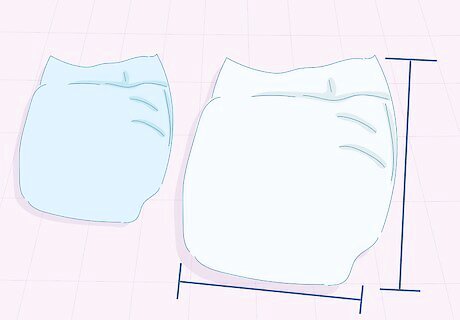
Use a bigger diaper for a better fit and more absorbency. A bigger diaper may be more comfortable for your child, which is fine as long as it still catches the urine and feces. It's also able to absorb more since it has a larger area. Some kids really don't like sitting in soaked diapers, and they will take them off to avoid it. They may not have the words yet to tell you what's wrong.
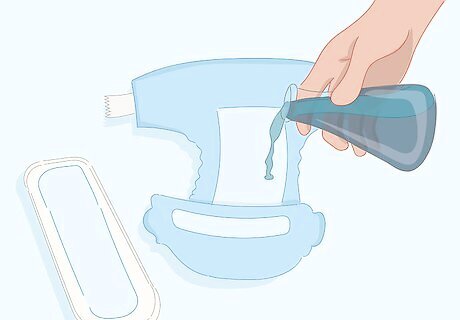
Pick a more absorbent diaper to minimize discomfort. Another option is to simply choose a diaper that can hold more urine. That way, your child won't feel wet as quickly, and they will be less likely to take off their diaper. You can also try adding a liner to the diaper.
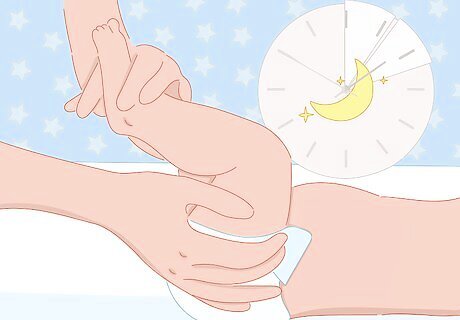
Change your child's diaper more often. By taking their diaper off, your child may be saying they don't like sitting in a wet diaper. If you change them more frequently, particularly at night, you may have better luck with your child keeping their diaper on. For instance, if you normally change your child right before bed and once during the night, consider changing them before bed and twice during the night instead.
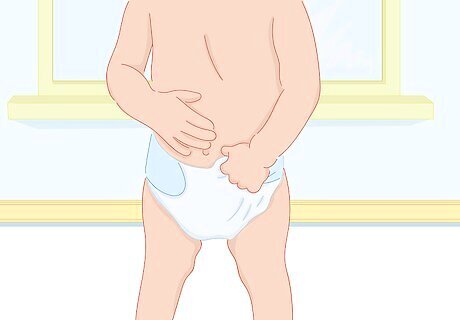
Watch for other signs of discomfort. The diaper might be itchy for the child or even too loose. Before they remove their diaper, toddlers that are uncomfortable will usually show signs that they are about to do it. They might rub, scratch, pinch, pull, or look disapprovingly at their diaper area. Try another kind of diaper if your child seems unhappy in the ones you're using. They may move or walk differently, too, when they're uncomfortable. Reading these signs and fixing the diaper problem may keep the toddler from taking it off.




















Comments
0 comment